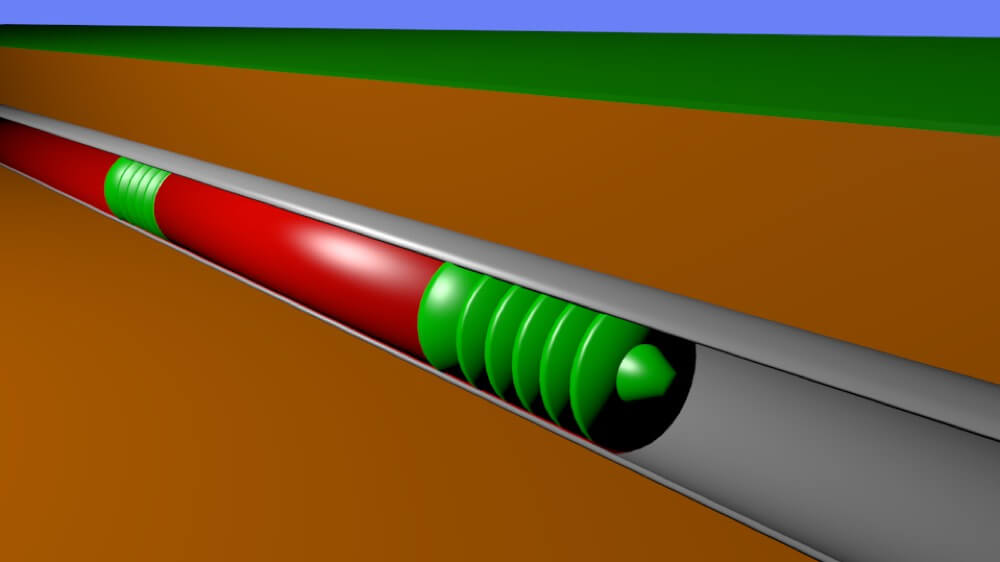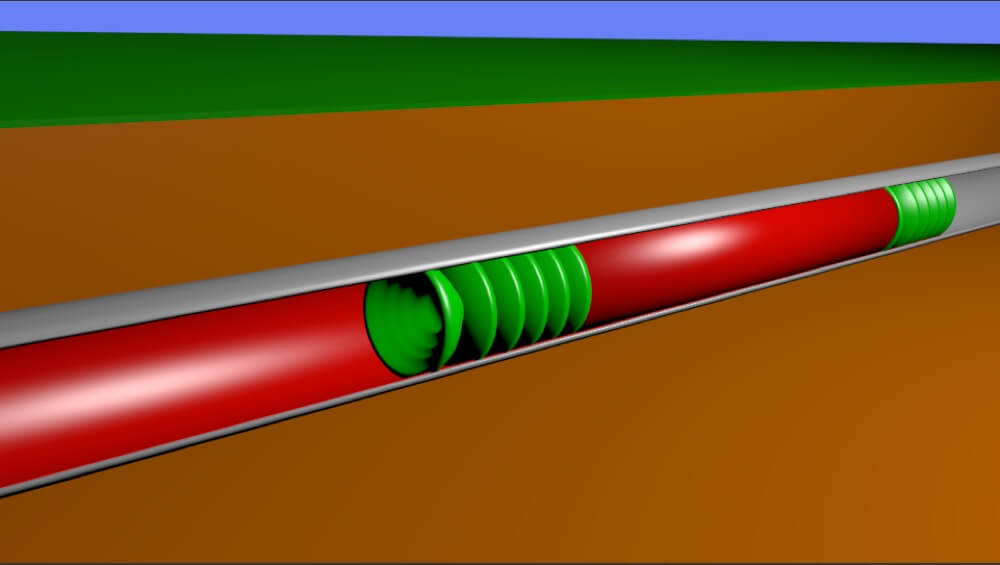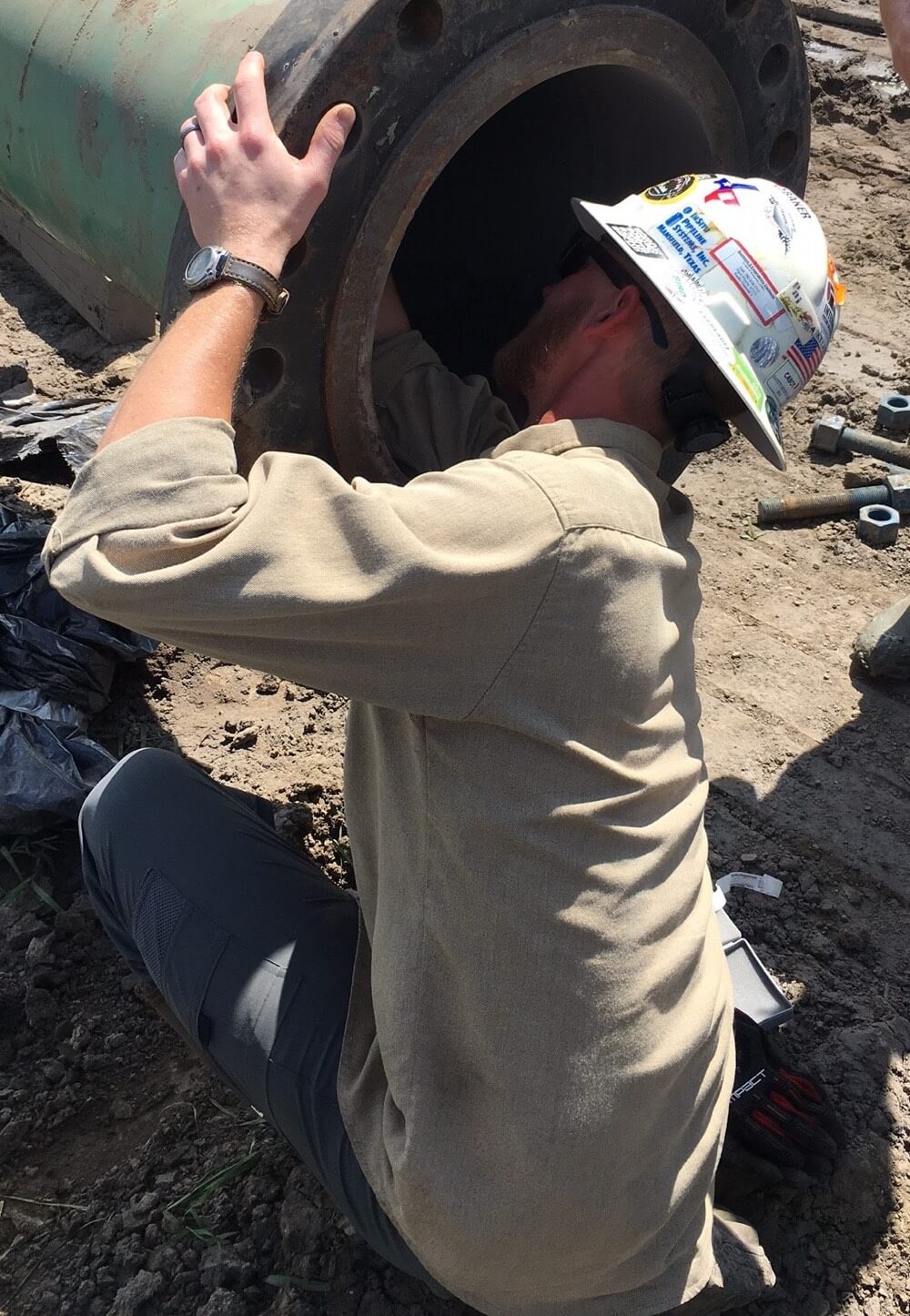Pipeline rehabilitation methods are commonly thought to be cured-in-place, fold-and-form liners, sliplining or spray-on coatings. An upcoming innovative process referred to as pig-applied in-situ coating is an industry game changer.
What is Pig-Applied In-Situ Coating?
The process is unique in that pipeline pigs are used to clean and epoxy-coat the full length of new and old pipelines.
In turn; rehabilitating up to 20 miles of pipe length without segmenting and only accessing both ends of the pipeline. This is a process that has been proven to drastically increase the working life of pipelines, the in-situ coating has transformed and improved by leaps and bounds since its inception becoming a viable method for extending the life of pipelines.
What Are Stages Involved with the In-Situ Coating Process?
The stages of the process consist of detergent cleaning, acid cleaning and etching, water flushing, passivating and epoxy coating. After all hydrocarbons have been removed, inhibited hydrochloric acid is batched and shuttled between two bi-direction pigs. Next, brush pigs (with water) remove any oxidation and scale that the acid has softened and removed within the line. (Read How Pigging Works in Trenchless Repair and Rehabilitation.)

The process of acidizing and water flushing is typically repeated four or five times to reach desired results. Samples from each pig run are collected and analyzed. The sample analyst examines the acid strength and the rate the acids concentration is depleting, as well as the percentage of solid content found in the water flush runs.

The following lab results conclude what level of cleanliness the pipeline is at throughout the process. A large drop in acid concentration represents a dirty pipeline, while a minute drop in concentration represents a cleaner pipeline.
The passivation stage is a multi-step process which stops the development of new oxidation, followed by achieving a desired pH, and solvent runs which expedite drying the pipeline prior to the coating application. (Read Understanding Key Laboratory Testing Methods for Site Investigation.)
The surface preparation is capable of producing a SSPC-SP 5/NACE No. 1 white metal surface. The pipeline pigs used for cleaning are propelled by oil free dehydrated compressed air and are never tethered. Whereas other methods are restricted by bends and elevation changes, the in-situ coating process is unaffected.
The pig extruded method provides more consistent and accurate mil thicknesses than traditional spray-applied methods.
Pipeline Corrosion Prevention
Corrosion is one of the costliest problems concerning pipelines which represents significant capital investments throughout the world. The in-situ coating process can save and extend the lives of pipelines at a fraction of the replacement cost. (Read The Lifespan of Steel, Clay, Plastic & Composite Pipes.)
In most cases the pipeline has been pushed to its limit and may have been forced to decrease pressure or is experiencing leaks.
Many pipelines have been taken out of service or is close to decommissioning. The in-situ coating process acts as the means to resuscitate a dying pipeline. The largest independent brine producer in the U.S. is the exception, not the rule by electing to coat their critical brine water pipelines before going into service.
They believe in mitigating corrosion through prevention, as opposed to waiting for corrosion to spur action. Internal pipeline coating is obviously used to combat corrosion, but it also brings with it a multitude of benefits.
Why is a Pipeline Coating Better than Using Inhibitors?
Increasing flow efficiency can reflect serious energy savings due to reduced pumping cost and eliminating the need for drag reducing agents. Improved product purity and reduced inhibition are yet another benefit to internal coating.
Many pipeline owners are spending millions on inhibitors whereas a coating can eliminate or substantially reduce the need for inhibitors.

Also, an internally coated pipe will slow and resist buildup of deposits on the pipe wall. Considering the multitude of problems that may occur within an uncoated pipeline, it’s understood that many of the problems are not recognized at the time the pipeline is installed.
In-situ coating is the perfect afterthought solution to many of the problems associated within pipelines.
Almost all major oil companies in the U.S. have used the in-situ coating process to rehabilitate pipelines. In addition, projects providing proven success have been executed on five continents in areas such as the North Slope in Alaska, China, off-shore Italy, Saudi Arabia, just to name a few.
A top tier executive to one of the world’s largest publicly traded international oil and gas companies put it well “There is still some element of magic to the in-situ process that we need to dispel….it’s not magic, it’s engineering and science”.
The in-situ coating process began as an idea created through engineering and was made feasible through science. Lowering capital expenditure related to pipeline repairs and increase profitability is an ongoing mission.
In-situ coating has been proven to be an effective, viable tool for maintaining pipeline integrity with high potential to increase profitability and reduce environmental impacts.
Here's a short video further outlining the in-situ coating process: